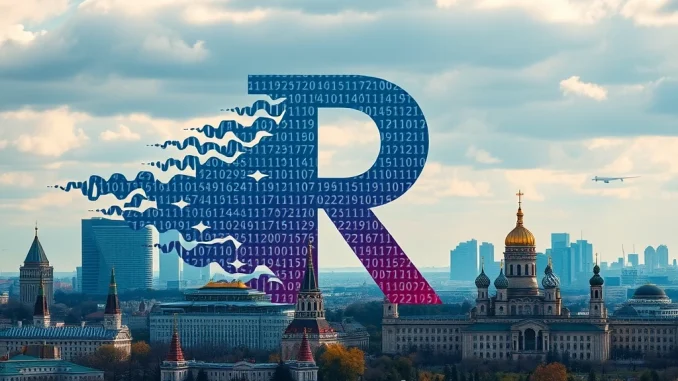
Big news from the East! The development of a Russia digital ruble has been a topic of keen interest in the financial world, and now we have a firm timeline. The Central Bank of Russia has officially confirmed that its digital ruble launch for the payment network is planned for 2026. This is a significant step in the global push towards central bank digital currencies (CBDCs).
What is the CBDC Russia is Building?
At its core, the Russia digital ruble is designed to be a central bank digital currency (CBDC). Think of it as a digital form of the physical ruble, issued and backed by the central bank itself. Unlike cryptocurrencies like Bitcoin, which are decentralized, a CBDC is centralized, offering a direct liability of the central bank to the holder.
Here’s a quick breakdown of what this means for users:
- **Direct Access:** Citizens will have access to digital ruble wallets hosted directly on the central bank’s platform.
- **Official Currency:** It’s not a new asset class, but a digital representation of the existing fiat currency.
- **Centralized Control:** The central bank maintains control over its issuance and flow, aiming for stability and oversight.
The Path to the Digital Ruble Launch in 2026
While the 2026 target has been set, the journey hasn’t been without its hurdles. Earlier reports indicated some delays, but the Central Bank confirms that testing and development have been ongoing. This phased approach allows the authorities to iron out technical complexities and regulatory frameworks before a full-scale rollout.
The focus for the initial phases includes:
- Testing core functionalities of the platform.
- Integrating financial institutions.
- Piloting specific use cases.
Why is Digital Currency Russia‘s Priority?
The primary motivations behind the Russia digital ruble project appear to center on efficiency and transparency. The government specifically plans to leverage the digital currency for state-level payments, including budget disbursements and subsidies. This move is intended to:
- **Improve Transparency:** Tracking the flow of government funds becomes easier and more precise.
- **Reduce Costs:** Potentially lowers the costs associated with distributing funds compared to traditional methods.
- **Increase Efficiency:** Streamlines the process of making and receiving state payments.
This focus on transparency aligns with global trends where governments explore CBDCs as tools for better fiscal management and combating corruption.
Understanding Central Bank Digital Currency (CBDC)
The Russia digital ruble joins a growing list of countries exploring or implementing CBDCs. These digital forms of fiat currency differ significantly from decentralized cryptocurrencies. Key distinctions include:
| Feature | CBDC (e.g., Digital Ruble) | Decentralized Crypto (e.g., Bitcoin) |
|---|---|---|
| Issuer | Central Bank | Network Participants (Miners/Validators) |
| Value Backing | Backed by the state/central bank assets | Market demand, supply, and network consensus |
| Control | Centralized (Central Bank) | Decentralized (Distributed Network) |
| Primary Goal | Improve existing payment systems, transparency, financial stability | Decentralization, alternative monetary system, store of value |
Russia’s adoption reflects a broader global trend where central banks are assessing how digital technology can reshape national payment infrastructures.
What Happens Next?
With the 2026 timeline announced, the coming years will be critical for the Russia digital ruble. We can expect continued testing, refinement of the platform, and potentially pilot programs involving citizens or specific government departments. The success of the rollout will depend on user adoption, the robustness of the technology, and how effectively it integrates into the existing financial ecosystem.
Conclusion: A New Era for Digital Currency Russia
The confirmation of the 2026 digital ruble launch marks a pivotal moment for digital currency Russia. By creating a central bank digital currency, Russia aims to modernize its payment systems, enhance transparency in government spending, and provide citizens with a new form of state-backed digital money. While challenges remain, the clear timeline indicates a strong commitment to bringing the CBDC Russia project to fruition, potentially setting a precedent for other nations exploring similar digital transformations.



